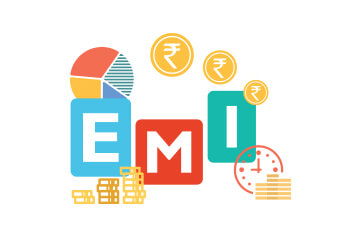Banks are financial institutions that the country’s government permits to conduct activities such as accepting deposits, issuing funds in loans, providing cheque facilities and other utility functions. They are the monetary institution that regulates the financial system of the country. They serve as an arbitrator between borrowers and depositors. There are two types of banks - central bank, the apex monetary institution, and commercial banks-either public, private, or foreign. Banks have an IFSC code that helps to know which branch of a bank the individual’s account exists.

Banks are financial institutions that the country’s government permits to conduct activities such as accepting deposits, issuing funds in loans, providing cheque facilities and other utility functions. They are the monetary institution that regulates the financial system of the country. They serve as an arbitrator between borrowers and depositors. There are two types of banks - central bank, the apex monetary institution, and commercial banks-either public, private, or foreign. Banks have an IFSC code that helps to know which branch of a bank the individual’s account exists.
NBFC refers to a non-banking financial company registered under the companies act, 1956. They conduct financial services such as the issue of loans and advances, securities trading, wealth management. They offer services similar to a bank but do not hold a banking license. Three categories of NBFCs are asset companies, loan companies, and investment companies. Examples of loan companies in India are Muthoot Finance Ltd., Tata Capital Financial Services Ltd. Aditya Birla Ltd., etc.
Difference between Banks and NBFCs -
- Incorporation :
Banks are incorporated under the Banking Regulation Act, 1949, while NBFCs are included under the Companies Act, 1956. - Demand Deposits :
NBFCs do not accept demand deposits, whereas banks accept demand deposits. - Foreign Investment :
In NBFCs, foreign investments upto 100%, while foreign investments upto 74% are allowed in private banks. - Payment and Settlement System :
Banks are an integral part of the payment and settlement system, but NBFCs are not a part of the system. - Reserve Ratio :
The maintenance of reserve ratio is not necessary for NBFCS, though Banks must maintain reserve ratios. - Deposit Insurance Facility :
NBFCs do not provide deposit insurance facility; however, banks offer deposit insurance facilities. - Creation of Credit :
Banks create credit; on the contrary, NBFCs do not create credit. - Transaction services :
Banks offer transaction services, although NBFCs do not give transaction services. - Self demand drafts :
Banks can issue self demand drafts, but NBFCs cannot give self demand drafts. - Self cheques :
Banks are permitted to draw self-cheques on their own; however, NBFCs cannot draw self cheques independently.
Reasons why banks are better than NBFCs -
- Low-interest rate :
Banks charge a lower rate of interest than the interest rates charged by the bank. - Over-draft facility :
Banks offer the overdraft facility, which allows borrowers to pay interest in advance. It takes longer to repay loans if the tenure is long and the interest charged on it is more; by availing of the overdraft facility, a borrower can cut short the loan term, hence saving money. NBFCs do not provide an overdraft facility. - Documentation process :
The documentation process of banks is strict and more organised than the documentation process of NBFCs. - Interest rate :
The interest rate charged by banks is lesser than the interest rate charged by NBFCs. And in banks, the interest rates are quickly cut as per the MCLR. - Charges :
The prepayment charges, foreclosure and late repayment charges are much higher in NBFCs than the penalties charged by the banks. NBFCs also have a higher processing fee and charge a late fee of 10% to 20% on the EMI.
Individuals and companies trust banks because of various facilities such as cash deposits, loans and advances, cheque facilities, overdraft facilities, etc. Banks now even provide mobile and online banking, making it convenient for users to access the various banking facilities. Banks have instilled the habit of saving in people.
People can keep according to their needs as banks provide multiple accounts such as current account, savings account, fixed deposit account, recurring deposits, etc. They also offer additional liquidity in the form of loans and advances, which be beneficial in emergencies. There are various types of loan a borrower can avail of - personal loan, education loan, home loan, gold loan, vehicle loan.
The government also recognizes banks to offer such facilities, which increases the trust factor. Many banks provide various online facilities such as an online loan EMI calculator to Calculate EMI before applying for a loan. The transparency factor also plays a crucial role. Public banks have to maintain transparency in their dealings which increases the trust in them from the citizens. The money deposited in banks is also much safer than keeping large amounts at home without security.
Also read this: Cash-Strapped Patients With Covid-19 Infection Can Consider Loans

